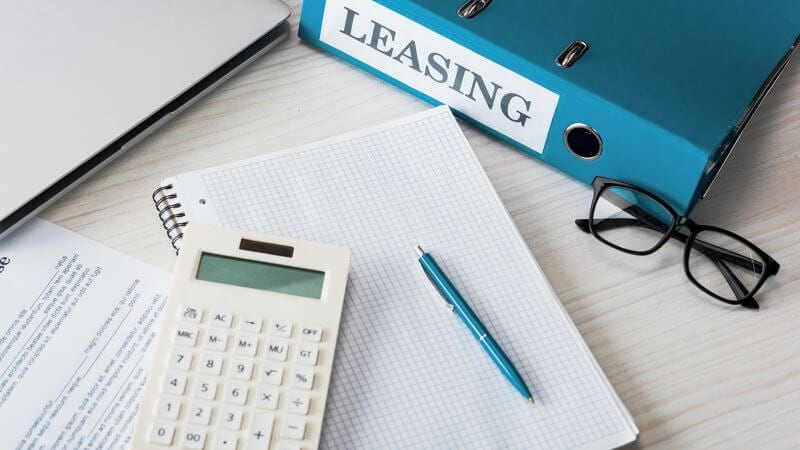2. Why enter into a sale-leaseback transaction?
- What are the benefits of a sale-leaseback transaction?
- What are the disadvantages of a sale-leaseback transaction?
3. Examples of sale leasebacks
4. Identifying a sale-leaseback transaction
5. Accounting for a sale leaseback
6. Summary
What is a sale-leaseback transaction?
A sale-leaseback transaction occurs when an entity sells an asset it owns and immediately leases the asset back from the buyer. The seller then becomes the lessee and the buyer becomes the lessor. These types of transactions impact the accounting for both the seller-lessee and buyer-lessor.
With the adoption of ASC 606 and ASC 842, both seller-lessees and buyer-lessors are facing more stringent accounting requirements. Under ASC 842, both parties must assess whether the buyer-lessor has obtained control of the asset and a sale has occurred. Entities who haven’t yet adopted the new lease accounting standards can elect the package of practical expedients available during the transition and not reassess expired or existing lease contracts, assuming they have been correctly accounted for previously. This allows these companies to grandfather previous transactions that were accounted for as sale leasebacks under ASC 840 but may not be under ASC 842.
This article will focus on the accounting set forth by the FASB for companies that have already transitioned to ASC 842.
Why enter into a sale-leaseback transaction?
Entities may consider sale leasebacks in an effort to generate cash flow without increasing debt. Discussing this option and other accounting relief efforts available during an economic downturn are conversations many companies may now be exploring.
Seller-lessees and buyer-lessors will make a business decision to enter into a sale leaseback based upon several factors. Below we discuss the potential pros and cons of entering into such transactions from both the seller-lessee and buyer-lessor’s perspectives.
What are the benefits of a sale-leaseback transaction?
Benefits to the seller-lessee
- Expansion of the business by freeing up cash while maintaining the utilization of the asset
- Improvement to the balance sheet by creating a less expensive form of financing rather than seeking out a loan to obtain funds
- Improvement to the P&L as cash can be invested elsewhere for a higher return
- Transfer of tax ownership to the buyer-lessor and deductible expenses for rental payments
- Concentration on core business operations rather than managing and maintaining fixed assets
Benefits to the buyer-lessor
- Income over the duration of the lease term
- Control over ROI based on the terms outlined in the agreement
What are the disadvantages of a sale-leaseback transaction?
Disadvantages to the seller-lessee
- Removal of the owned asset from the balance sheet
- Increased ROU asset, depending on the lease term and agreed-upon lease payments that exceed FMV
- Recognition of capital gains
Disadvantages to the buyer-lessor
- Renegotiation of contracts if the seller-lessee defaults on lease payments
- Primary creditor/owner if the seller-lessee files for bankruptcy
Examples of sale leasebacks
Sale-leaseback transactions are common for industries with high dollar value fixed assets, such as construction, energy, and aerospace. Companies typically sell higher-valued assets to increase liquidity and working capital. For example, construction companies often sell their real estate property and immediately lease it back from the new owner to develop.
Additionally, the aerospace industry enters into these types of transactions frequently. For example, an airline will sell its aircraft to an aircraft financing organization and immediately lease it back with no interruption to the day-to-day business. Real examples can be seen in contracts between Altavair and KKR with Delta Airlines, as well as ABOC Aviation with United Airlines.
The examples described above all indicate monetary transactions. However, sale-leaseback transactions can be both monetary and nonmonetary. For instance, a seller-lessee could obtain equity interest in the buyer-lessor in exchange for selling its asset.
The previous examples depict the asset sold as the same asset being leased back. Although not specifically indicated within the guidance, some accounting firms interpret that certain assets in a sale-leaseback transaction may be able to be substituted for substantially similar assets. For example, if a yellow model X excavator is sold to the buyer-lessor, but a model X excavator in a different color is leased back by the seller-lessee, this would likely qualify as a sale-leaseback transaction because the cash flows of both parties are not substantively impacted by the lease involving a different asset than the one sold.
The FASB specifies in the Basis for Conclusions (BC352c) of ASC 2016-02 that real estate assets will never qualify as substantially the same because, although assets may have similar characteristics, no two pieces of property would ever occupy the same location, and would, therefore, not be substantially the same.
Identifying a sale-leaseback transaction
The identification of a sale-leaseback transaction requires an immense amount of judgment, and it is good practice to review contracts of this nature with your auditors before entering into such arrangements. Although identifying sale leasebacks can be complicated, the following criteria should be assessed to determine how to account for the transaction. Under ASC 842 entities must apply ASC 606, Revenue from Contracts with Customers (ASC 606), to evaluate the contract and determine whether or not the sale of an asset has occurred.
The relevant sections of ASC 606 to apply in identifying and accounting for a sale-leaseback transaction are specified in ASC 842 and referenced throughout the section below.
Is there a sale?
The first step to identifying a sale-leaseback transaction is to assess whether there is a contract. ASC 606-10-25-1 through 8 explains the criteria for identifying whether an agreement is considered a contract.
Once it has been determined that there is a contract, the entity must assess whether the performance obligation has been satisfied by transferring control of the asset to the buyer-lessor at a point in time (i.e. a sale has occurred). Similar to evaluating the transfer of control of an asset for a lease, entities should determine whether the ability to direct the use of and the right to substantially all of the remaining benefits from the asset have transferred to the buyer-lessor. ASC 842 refers to ASC 606-10-25-30 a through e for a list of indicators that are often present when control has been transferred to the buyer-lessor.
Indicators the buyer-lessor has control of can include transfers of:
- Legal title
- Physical possession
- Significant risks and rewards of ownership
- Acceptance of the asset
- An obligation to pay for the asset
It’s important to remember that under ASC 842, both the seller-lessee and buyer-lessor must individually assess whether control of the underlying asset is transferred to the buyer-lessor. Although the steps to assess control are identical for both parties, each party can reach a different conclusion about the transfer of control and thus the occurrence of a sale. An example of when this may occur is when parties arrive at different lease classifications due to varying assumptions such as the economic life and fair value of the asset or the discount rate.
What would prevent accounting for the transfer as a sale?
The existence of a leaseback does not alone guarantee the presence of a sale. The classification of a lease by both the seller-lessee and buyer-lessor is important in determining whether control has been transferred, and thus whether the transaction is accounted for as a sale-leaseback transaction. According to ASC 842-40-25-2, if the seller-lessee classifies the leaseback as a finance lease or the buyer-lessor classifies the leaseback as a sales-type lease, then control has not been transferred to the buyer-lessor and the transaction should be accounted for as a financing transaction.
Another thing to consider is the presence of a purchase option within the leaseback. If the seller-lessee has an option to repurchase the asset, the option would preclude the transfer from being accounted for as a sale unless, as noted in ASC 842-40-25-3, the following two criteria are both met:
- The exercise price of the purchase option and the fair value of the asset are equivalent at the time the option is exercised. (i.e. the purchase option only permits the seller-lessee to repurchase the asset at its current FV)
- Other assets that are substantially the same as the transferred asset are readily accessible.
If the leaseback transaction fails to qualify as a sale because control is not transferred to the buyer-lessor, then the seller-lessee will classify the lease portion of the transaction as a finance lease and the buyer-lessor will classify the lease as a sales-type lease.
Accounting for a sale leaseback
Seller-lessee
After concluding that the transaction is eligible for sale-leaseback accounting, the seller-lessee will recognize the sale and any profit or loss on the sale when the buyer-lessor obtains control of the asset. Simultaneously the seller-lessee will also derecognize the asset and account for the leaseback portion of the transaction in accordance with ASC 842 by recognizing a lease liability and corresponding ROU asset.
Use our free Present Value Calculator to determine your lease liability:
To recognize the appropriate impact of the transaction, the seller-lessee must also adjust for off-market terms by adjusting the sale price. Per ASC 842-40-30-1, the first step is to determine whether the transaction price is at fair value (FV). Entities can utilize one of two methods below as an acceptable approach:
- Comparison of the sale price of the asset vs. FV of the asset
- Comparison of the present value of the lease payments vs. the present value of market rental payments
Each method to determine the variance to FV will yield different results, so entities can select the appropriate method based on the information they have more readily available. Note: This does not need to be selected as an accounting policy election. It is also important for the seller-lessee to consider any variable consideration it reasonably expects to be entitled to.
If the transaction is between related parties, then the seller-lessee and buyer-lessor do not have to determine the off-market terms but will be responsible for disclosing the nature of the transaction.
Upon determining that a sale-leaseback transaction has off-market terms, the seller-lessee may be required to make adjustments to the sale price so that it can be recognized at fair value. Per ASC 842-40-30-2, the necessary adjustments should be accounted for as follows:
Sale Price < FV = adjustment to increase the sales price through an increase (debit) to prepaid rent (reflected in seller-lessee’s initial measurement of the ROU asset)
Sales Price > FV = adjustment to decrease the sales price through an increase (credit) to additional financing liability
As mentioned above, in conjunction with the recognition of sale and any necessary off-market adjustments, the seller-lessee will additionally derecognize the carrying amount of the sold asset and account for the leaseback portion of the transaction in accordance with lease guidance in ASC 842. Please refer to our articles on accounting for operating leases and finance leases for a detailed explanation of how to account for a lease under Topic 842.
Buyer-lessor
The buyer-lessor will account for the purchase of the leaseback asset like the purchase of any other nonfinancial asset as described in ASC 360, Property, Plant, and Equipment. And similar to that of the seller-lessee, the buyer-lessor must also assess any off-market terms included in the total transaction agreement. Accounting for the leaseback portion will be in accordance with the lessor accounting model found in ASC 842-30.
Summary
Evaluating a sale-leaseback transaction can be quite complex, as it requires significant judgment to determine whether a sale has occurred and whether the transaction meets the criteria for transferring control as outlined in both ASC 606 and ASC 842. The details described above will help walk through an agreement to evaluate if it qualifies for sale-leaseback accounting, but several other factors should be considered as well, such as renewal options, right of first refusal, the seller-lessee residual value guarantee, etc. This article provides a high-level summary of the pros and cons of entering into a sale-leaseback transaction, common industry examples, and the steps required to identify and account for a sale-leaseback transaction.








